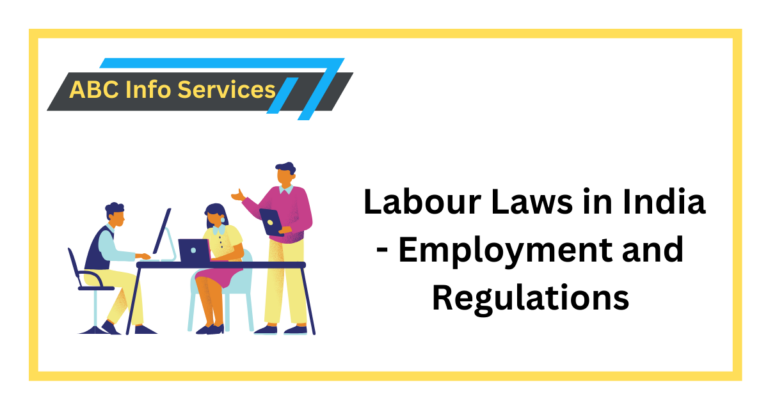Discover examples of fixed labour costs like salaries, benefits, and variable costs such as overtime, incentives. Learn how these costs shape businesses' financial strategies and adaptability.
It’s no secret that labour costs have recently been on the rise. But what is less well known is the cost of labour – and why small business owners can’t afford to ignore it. In this blog post, we’ll take a closer look at the factors contributing to the cost of labour and discuss some strategies for keeping your costs down.
It is made up of two main components: wages and benefits. Wages are the hourly rate employees pay, while benefits include health insurance, vacation time, and retirement savings. In recent years, both of these costs have been on the rise.
According to the reports, average hourly earnings for private-sector workers have increased by 2.8% since last year. And with the Affordable Care Act coming into effect, health insurance costs are also expected to rise.
Of course, labour costs aren’t just about wages and benefits. Other factors contribute to the total cost of employing someone. For example, there are costs associated with training and development, recruiting, and turnover.
How Can You Keep Labour Costs Down?
One of the best methods to keep your labour costs down is to invest in your employees. For example, training and development programs can help employees learn and not need constant supervision. And by investing in employee retention programs, you can reduce the costs associated with turnover.
Another strategy for reducing the cost of labour is to outsource some of your business operations, like payroll. For instance, if you’re not using in-house accounting or HR staff, you can outsource those functions to save money and time.
Of course, the best way to keep your prices down is to prevent them from standing up. That’s why staying up-to-date on the newest changes in the labour law advisor market is essential as adjusting your rates and benefits accordingly.
What Are the Factors Contributing to the Cost of Labour?
The significant concern for small business owners. But by understanding the factors that contribute to the cost of delivery and implementing some cost-saving strategies, you can keep your labour costs under control.
What are the Examples of Labour Costs?
-
The Direct Cost of Labor
The direct cost of labour is the cost of the wages and benefits paid to employees. This includes salary, bonuses, commissions, vacation pay, and health insurance. However, it does not include the indirect costs associated with employee turnover or training and development programs.
There exist a few strategies that small business owners can use to reduce the direct cost of labour. One is to invest in employee retention programs. Another is to outsource some of your business functions.
-
The Indirect Cost of Labour
The indirect cost of labour is the cost of employee turnover, training and development programs, and recruitment. This cost is often overlooked but can critically impact your bottom line.
One of the best processes to reduce indirect labour cost is to invest in your employees. For example, training and development programs can help employees improve their skills and become more productive. And by investing in employee retention programs, you can reduce the costs associated with turnover.
Another indirect labour cost strategy is outsourcing some of your business functions. For instance, if you’re not using in-house accounting or HR staff, you can outsource those functions to save money.
-
Fixed Cost of Labour
The fixed labour cost is office space, equipment, and utilities.
One of the best procedures to reduce the fixed cost of labour is outsourcing some of your business functions. For instance, if you’re not using in-house accounting or HR staff, you can outsource those functions to save money.
Another strategy for reducing the fixed cost of labour is to downsize your office space. If you’re not using all the space in your office, you can sublet it or move to a smaller office.
-
The Variable Cost of Labour
The variable labour cost is the cost of employee turnover, training and development programs, and recruitment.
One of the best methods to reduce the variable labour cost is to invest in your employees. Training and development programs can help employees.
The Distinction Between Direct and Indirect Labour Costs:
In the realm of comprehending labour costs, the distinction between direct and indirect costs stands as an important concept. Direct labour costs encapsulate the financial outlay for employees who are directly engaged in the production process. These individuals contribute hands-on to crafting goods or delivering services. Their wages are directly linked to the output generated, making them an integral part of the production cycle. This category often encompasses assembly line workers, craftsmen, and machine operators.
Conversely, indirect labour costs encompass a broader spectrum of expenses. These expenses extend beyond the immediate production process and delve into the supportive infrastructure that sustains the workforce. Indirect labour costs encompass overhead expenses such as administrative salaries, human resources management, training, and employee benefits. These costs are essential for maintaining a conducive work environment and ensuring the well-being of the entire workforce, even though they might not directly influence production levels.
For your ease, let us see the differences in a table:
| Distinction | Direct Labour Costs | Indirect Labour Costs |
| Definition | Wages for production | Overhead expenses |
| Examples | Workers on assembly line, machine operators | Administrative salaries, employee benefits |
| Link to Production | Directly contribute to making products or services | Support the workforce environment, but not directly involved in production |
Examples of Fixed and Variable Costs of Labour
Examples of Fixed Costs of labour:
Salaries and Regular Wages: Base salaries of permanent employees remain constant regardless of production levels.
Benefits: Fixed employee benefits such as health insurance, retirement contributions, and paid time off.
Annual Bonuses: Pre-determined bonuses paid out annually, regardless of production variations.
Office Space: Rent and maintenance costs for office spaces, which remain constant over time.
Management Salaries: The compensation of top-level management positions that typically have fixed salaries.
Examples of Variable Costs of labour:
Overtime Pay: Wages for extra hours worked beyond regular shifts.
Commission: Compensation based on sales performance, varying with the volume of sales generated.
Production-Based Incentives: Bonuses or additional pay tied directly to production output achieved.
Temporary and Part-Time Workers: Hiring additional workforce during peak seasons or projects, leading to variable costs.
Travel Expenses: Reimbursements for work-related travel, varying with the frequency and distance travelled.
Piece-Rate Pay: Wages calculated per unit of production, directly linked to the quantity produced.
Bonus Payments: Performance-based bonuses that fluctuate based on individual or team achievements.
Contract labour: Expenses incurred when hiring contract workers on a project basis, adjusting with project demand.
The distinction between fixed and variable labour costs helps businesses understand their cost structures and adapt to changing production levels or economic conditions.
Calculations of the Cost of Labour
You can calculate an increase in the hourly labour cost of an employee from their gross earnings to the final price in terms of related expenses. The next step is dividing it by the employee’s annual workdays significantly. This will help determine how much an employee costs to their employer per hour.
Uses of Cost of Labour in Business
The one of the main factors in business. It can significantly impact your bottom line and your ability to compete in the marketplace. You can use the cost of labour to your advantage in several ways:
- You can negotiate better wages for your employees
Cost management is an integral part of any business. If you can keep your labour costs down, you will be in a higher-quality position to compete against other companies.
- You can use it to price your products or services
Another way to use the labour cost to your advantage is by pricing your products or services accordingly. If you know that your labour costs are high, you can price your products or services accordingly. This will help you to cover your expenses and still make a profit.
- You can use it to cut costs
If you’re looking to cut costs, one of the best areas to start is your labour costs. There are proven ways of reducing your labour costs. For example, you can automate processes, outsource work, or use technology to replace workers.
- You can use it to improve efficiency
You must look at your labour costs to improve your business’s efficiency. You can use several processes to reduce the time and money you spend on labour. For example, you can automate processes, outsource work, or use technology to replace workers.
- You can use it to attract investment
If you’re looking to attract investment, one of the things you need to focus on is your labour costs. Investors will want to know how much you’re spending on labour and whether you can control your costs. If you may have a handle on your labour costs, you’ll be in a better position to attract investment.
Conclusion
Vakilsearch is a legal firm that can be your trustworthy partner to help you with legal services in the country. If you wish to know more about how to reduce the cost of labour of your business by implementing the right strategies, we can help. Get in touch with us to know more.
Read More:










